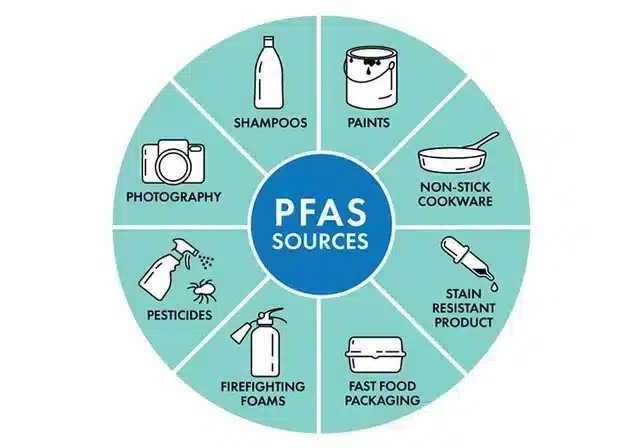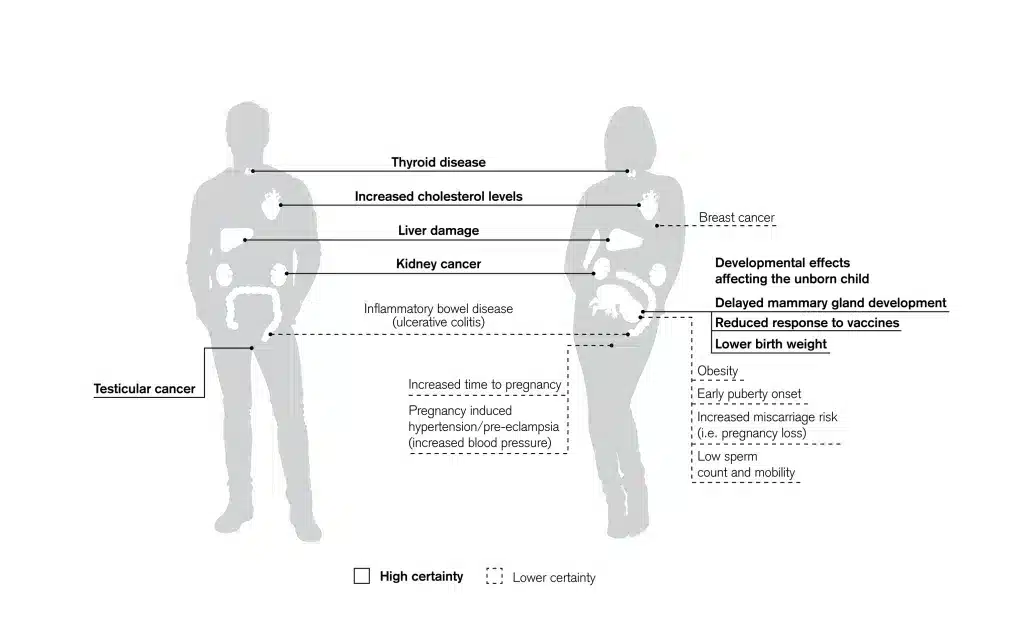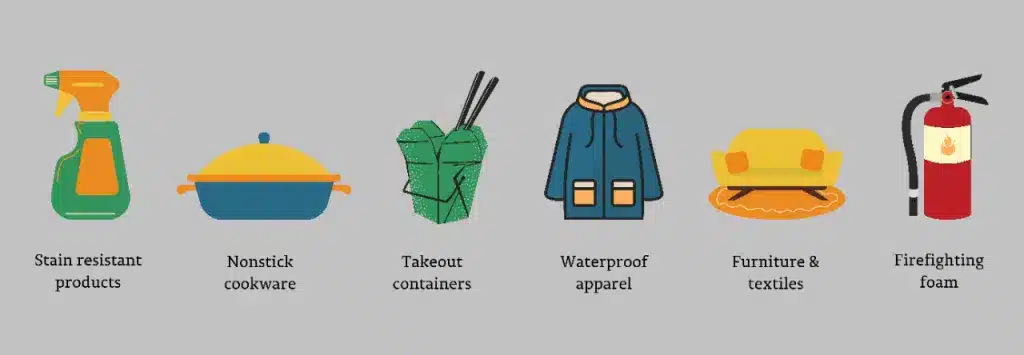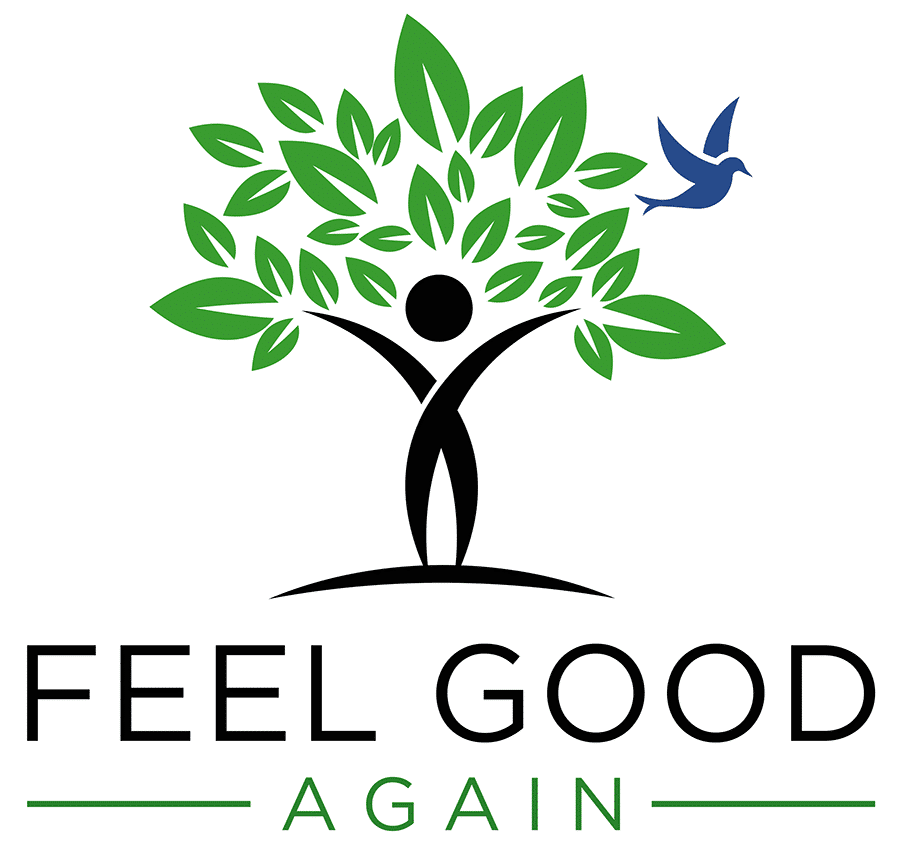No matter how clean you eat or natural the products you use are, chemicals are everywhere in the environment. They contaminate the air, water, soil and get incorporated into our food. They are found in packaging, clothing, furniture, fabrics and just about anything we use. We breathe them in and eat and drink them and apply them to our skin.
It is estimated that women put an average of over 168 chemicals on their bodies10 per day. Exposure to these chemicals may be responsible for early puberty in girls11 since some mimic estrogen. The list of hormone disrupting chemicals12 is long and so are the effects. In this blog I will focus on the hormone disrupting effects of PFAS.
Sources of PFAS
PFAS (Per- and polyfluoroalkyl substances) are called forever chemicals because they don’t break down. There are several types of PFAS having different effects. They are found in:
- Breast milk1
- Brain, liver, lung, bone and kidney2
- Soil and plants3
- Water4–6
- Nonstick cookware7
- Food packaging7
- Waterproof clothing
- Fire-fighting foams.

PFAS Effects
They have profound effects on our hormones. 8
- Lowers fetus sex hormone concentration.
- Irregular periods
- Earlier menopause
- Infertility
- Endometriosis
- PCOS
- Preterm birth
- Low birth rate and fetal growth defects
- Decreased bone mineral density – osteoporosis9

Having a period releases PFAS and women on birth control or in menopause had higher levels.
Read Also: Why You Should Consider Hormone Replacement Therapy
Reducing Exposure to PFAS
The best way to decrease your levels of PFAS is to reduce your exposure.
- Use PFAS free cookware such as stainless steel, cast iron, 100% ceramic (not ceramic coated) such as Scanpan, GreenPan, Zwilling, Beca Eco-logic, GreenLife, glass
- Filter your water- reverse osmosis is best.
- Avoid packaging materials as much as possible.
- Look for clothing and personal care products without
By far your water and cooking utensils are the biggest source of exposure. Go green, eat and drink clean and avoid the hormone disrupting chemicals as much as possible. Join our Facebook group to continue to learn and share with a community of people who can uplift, motivate and share healthcare secrets.
References
- Macheka-Tendenguwo LR, Olowoyo JO, Mugivhisa LL, Abafe OA. Per- and polyfluoroalkyl substances in human breast milk and current analytical methods. Environ Sci Pollut Res Int. 2018;25(36):36064-36086. doi:10.1007/s11356-018-3483-z
- Pérez F, Nadal M, Navarro-Ortega A, et al. Accumulation of perfluoroalkyl substances in human tissues. Environ Int. 2013;59:354-362. doi:10.1016/j.envint.2013.06.004
- Ghisi R, Vamerali T, Manzetti S. Accumulation of perfluorinated alkyl substances (PFAS) in agricultural plants: A review. Environ Res. 2019;169:326-341. doi:10.1016/j.envres.2018.10.023
- Llorca M, Farré M, Picó Y, Müller J, Knepper TP, Barceló D. Analysis of perfluoroalkyl substances in waters from Germany and Spain. Sci Total Environ. 2012;431:139-150. doi:10.1016/j.scitotenv.2012.05.011
- Gellrich V, Brunn H, Stahl T. Perfluoroalkyl and polyfluoroalkyl substances (PFASs) in mineral water and tap water. J Environ Sci Health A Tox Hazard Subst Environ Eng. 2013;48(2):129-135. doi:10.1080/10934529.2013.719431
- Schwanz TG, Llorca M, Farré M, Barceló D. Perfluoroalkyl substances assessment in drinking waters from Brazil, France and Spain. Sci Total Environ. 2016;539:143-152. doi:10.1016/j.scitotenv.2015.08.034
- Scheringer M. Innovate beyond PFAS. Science. 2023;381(6655):251. doi:10.1126/science.adj7475
- Rickard BP, Rizvi I, Fenton SE. Per- and Poly-fluoroalkyl Substances (PFAS) and Female Reproductive Outcomes: PFAS Elimination, Endocrine-Mediated Effects, and Disease. Toxicology. 2022;465:153031. doi:10.1016/j.tox.2021.153031
- Khalil N, Chen A, Lee M, et al. Association of Perfluoroalkyl Substances, Bone Mineral Density, and Osteoporosis in the U.S. Population in NHANES 2009-2010. Environ Health Perspect. 2016;124(1):81-87. doi:10.1289/ehp.1307909
- ABC News – Women Put an Average of 168 Chemicals on Their Bodies Each Day, Consumer Group Says
- News-Medical.Net – Are Chemicals in Cosmetics Linked to Early Puberty in Girls?
- National Institute of Environmental Health Sciences – Endocrine Disruptors






She is a recognized and award-winning holistic, functional, integrative and anti-aging healthcare practitioner, speaker and author, and has been featured in ABC News, Forbes, WOR Radio and many media outlets to spread the word that you can live younger and healthier at any age.